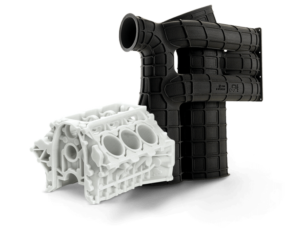Top 3 Injection Molding Pitfalls and Best Practices to Avoid Them
Before delving into the common pitfalls of injection molding, let’s quickly review the injection molding process, its basics, and the concept of rapid injection molding.
Injection Molding: An Overview Injection molding involves loading plastic resin pellets into a hopper, which then travels into the barrel of an injection molding machine. Through the combination of heat and pressure, the pellets melt into a molten material ready for injection. The molten plastic is pushed through a nozzle into the mold cavity by the turning screw, creating the desired shape. After cooling, the mold opens, and the final part is ejected using an ejection plate.
Injection Molding Basics Injection molds consist of two main components: the mold cavity and the mold core. The mold core forms the main internal surfaces of the part, while the mold cavity forms the major external features. These components separate along the parting line and release the finished plastic part with the help of ejector pins. The parting line can be located on the top, bottom, or in stepped or angled positions, depending on the part design.
Rapid Injection Molding Rapid injection molding is achieved through advanced digital manufacturing practices that significantly speed up the mold building process. It can reduce the typical mold build time from 6-18 weeks to just a few days. Rapid injection molding allows for the production of real injection molded parts suitable for both prototyping and low-volume production, saving time and costs.
Now, let’s discuss the top three common injection molding pitfalls and the corresponding best practices to avoid them:
Pitfall #1 – Knit Lines Knit lines occur when the leading edge of the molten plastic, which is the coolest point, meets an obstruction and flows around it, resulting in visible lines on the part surface. ABS resin is particularly prone to knit lines. To address this issue, it is crucial to perform mold flow analysis to identify potential design issues and modify them accordingly. Considering alternative materials that are less prone to knit lines is also recommended.
Pitfall #2 – Sink and Warp Shrinkage variations in materials can lead to sink marks, warping, distortion, and dimensional issues in injection molded parts. To minimize these problems, it is important to design parts with thinner and consistent wall sections, as different cooling rates between thick and thin walls can cause stress and warping. Gradual transitions in wall thickness and the use of angles can aid material flow. Careful part and mold design, along with maintaining uniform wall thickness, help reduce sink and warp issues.
Pitfall #3 – Shrinkage Shrinkage is a natural occurrence in most injection-molded resins. Choosing materials with lower shrinkage rates and avoiding abrupt changes in wall thickness can help control shrinkage. Gradual transitions between thick and thin sections, utilizing angles, and maintaining uniform wall thickness throughout the part design contribute to managing shrinkage effectively, especially for parts with tight tolerances.
Adhering to Best Practices:
- Maintain uniform wall thickness throughout the part.
- Utilize ribs to reinforce walls without increasing thickness excessively.
- Increase in thickness by 10% provides a 33% increase in stiffness.
- Core out unnecessary thickness and wall stock.
- Maintain a minimum of 0.5° draft angle on features perpendicular to the parting line.
- Aim for 1°-2° draft angle for ideal moldability.
- Use low-shrinkage materials for parts with tight tolerances.
- Design ribs and bosses to approximately 60% of the joining wall thickness to minimize sink marks.
- Minimize undercuts whenever possible to reduce mold complexity and cost.
- Incorporate gradual transitions when changing wall thickness.
- Utilize corner design with a radius (R1 + T = R2).
By following these best practices, you can avoid common pitfalls in injection molding and achieve high-quality, consistent plastic parts. Downloading the Designing for Manufacturability Guide can provide further guidance and insights.
Interested in obtaining more advice? Reach a Technical Engineer at contact@quickparts.com, or call +1 931-766-7290

